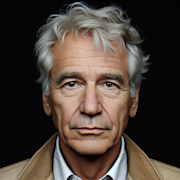Cinematic Alchemists: Special Effects Wizards Behind Classic Movie Magic

Have you ever watched a movie and found yourself mesmerized by the incredible special effects that bring the story to life? From the explosive action sequences of blockbuster films to the fantastical creatures of fantasy epics, special effects wizards have been creating movie magic for decades. In this blog post, we will take a closer look at the talented artists and technicians who have mastered the art of special effects to create some of the most iconic moments in cinema history.
The Pioneers of Special Effects
The history of special effects in film dates back to the earliest days of cinema. One of the first filmmakers to experiment with special effects was Georges Melies, a French director known for his innovative use of trick photography and stop-motion animation. In his 1902 film “A Trip to the Moon,” Melies created groundbreaking visual effects to depict a group of astronauts traveling to the moon and encountering strange creatures.
As filmmaking technology evolved, so too did the art of special effects. In the 1930s and 1940s, pioneers like Willis O’Brien and Ray Harryhausen pushed the boundaries of visual effects with their groundbreaking work on films like “King Kong” and “Jason and the Argonauts.” Using stop-motion animation techniques, these artists brought larger-than-life creatures and fantastical worlds to the silver screen in a way that had never been seen before.
The Golden Age of Practical Effects
The 1970s and 1980s are often regarded as the golden age of practical effects in cinema. During this time, filmmakers like George Lucas and Steven Spielberg revolutionized the industry with their use of groundbreaking practical effects in films like “Star Wars” and “E.T. the Extra-Terrestrial.” From the intricately detailed models of the Millennium Falcon to the lifelike animatronics of E.T., these movies set a new standard for visual effects in Hollywood.
One of the most iconic examples of practical effects in film history can be found in the work of makeup artist Rick Baker. Known for his incredible creature designs and prosthetic effects, Baker’s work on films like “An American Werewolf in London” and “Men in Black” earned him multiple Academy Awards and solidified his reputation as a master of his craft. His ability to bring fantastical creatures to life using practical effects techniques is a testament to the power of practical effects in creating movie magic.
The Rise of Digital Effects
In the 1990s, the landscape of special effects in film changed with the advent of digital technology. Filmmakers like James Cameron and Peter Jackson embraced digital effects as a way to enhance their storytelling and create visuals that were previously impossible to achieve using practical effects alone. Films like “Jurassic Park” and “The Lord of the Rings” trilogy pushed the boundaries of what was possible with computer-generated imagery (CGI) and set a new standard for visual effects in modern cinema.
One of the most influential figures in the world of digital effects is visual effects supervisor Dennis Muren. Muren’s work on films like “Jurassic Park” and “Star Wars: Episode I - The Phantom Menace” helped to revolutionize the use of CGI in filmmaking and earned him multiple Academy Awards for his groundbreaking work. His ability to seamlessly blend practical effects with digital technology has set a new standard for visual effects in the digital age.
The Future of Special Effects
As technology continues to evolve, the future of special effects in film looks brighter than ever. With advancements in virtual reality, augmented reality, and real-time rendering, filmmakers have more tools at their disposal than ever before to create immersive and visually stunning cinematic worlds. From the hyper-realistic CGI of films like “Avatar” to the mind-bending visuals of “Inception,” the possibilities for special effects in film are truly limitless.
In conclusion, special effects wizards have played a crucial role in shaping the world of cinema and bringing some of the most iconic moments in film history to life. From the pioneering work of Georges Melies to the digital revolution of the 21st century, special effects artists continue to push the boundaries of what is possible on the silver screen. As technology continues to evolve, we can only imagine what incredible feats of movie magic these cinematic alchemists will create in the years to come.

Desmond van der Walt
Journalist
More From Classics Authority Movies

Movie
The Green Mile (1999)

Movie
The Masterful Craftsmanship of Akira Kurosawa: Japanese Cinema's Maestro

Movie
The Good, the Bad and the Ugly (1966)

Movie
Ben-Hur (1959)

Movie
Cinematic Ephemera: Exploring Classic Film Memorabilia

Movie
Good Will Hunting (1997)





